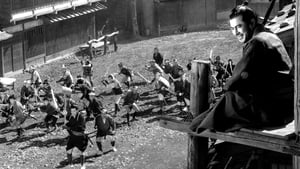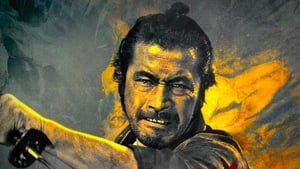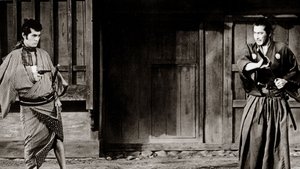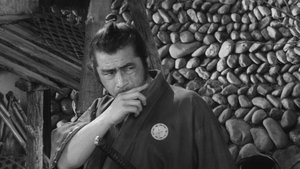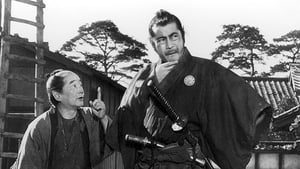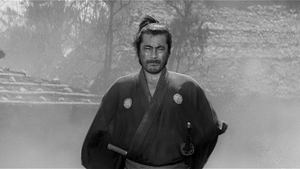Contact: info@alwanfilm.com
Video Sources 0 Views
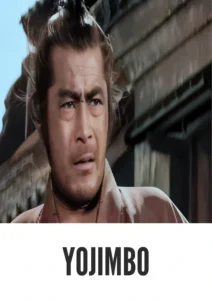
Synopsis
Yojimbo 1961 Colorized Review: A Samurai Masterpiece in Early Color

Introduction
In the realm of classic cinema, few films hold as much reverence and significance as Yojimbo 1961. This timeless masterpiece, directed by the legendary Akira Kurosawa, stands as a monumental achievement in the samurai film genre. However, what sets this exploration of honor, betrayal, and violence apart is its early colored version. In this article, we delve into the profound impact of colorization on the viewing experience of Yojimbo 1961, examining its historical context, cinematic legacy, and enduring influence on the world of cinema.
Check The Full Colorized Movies List
Check Our Colorized Movies Trailer Channel
Understanding Yojimbo 1961 Colorized: Director, Cast, and Genre
In the annals of cinema history, Akira Kurosawa’s name shines brightly, and Yojimbo 1961 adds yet another jewel to his crown. With his keen eye for storytelling and visual flair, Kurosawa crafted a narrative that resonates across cultures and generations. At the heart of the film is the incomparable Toshiro Mifune, whose portrayal of the enigmatic ronin captivates audiences to this day. Set against the backdrop of feudal Japan, Yojimbo 1961 explores the timeless themes of honor, deception, and the pursuit of justice, firmly establishing itself as a quintessential samurai film.
Kurosawa’s vision for Yojimbo 1961 was nothing short of revolutionary. Drawing inspiration from classic Japanese literature and Western cinema, he crafted a tale that transcended cultural boundaries, appealing to audiences both at home and abroad. The film’s success paved the way for a new wave of Japanese cinema, influencing countless filmmakers and reshaping the cinematic landscape for generations to come.
Exploring the World of Yojimbo 1961 Colorized: Plot and Characters
Yojimbo 1961 unfolds in a world fraught with political intrigue and simmering tensions. The story follows a nameless ronin who wanders into a town torn apart by warring factions. Seizing the opportunity, he manipulates the rival gangs, playing them against each other in a deadly game of deception. As the power struggle escalates, the ronin finds himself embroiled in a conflict that threatens to consume everything he holds dear. Alongside the ronin are a cast of compelling characters, each with their own motivations and secrets, adding layers of depth to the narrative tapestry.
At its core, Yojimbo 1961 is a meditation on the nature of power, violence, and the human condition. Through its dark and brooding atmosphere, the film explores the moral ambiguity of its characters, challenging audiences to confront their own notions of honor and justice. Amidst the chaos of feudal Japan, the clash of swords and the whispers of betrayal, Yojimbo 1961 offers a poignant reflection on the universal truths that bind us all.
The Art of Film Colorization
Film colorization, the process of adding color to black and white footage, has long been a topic of debate in the world of cinema. Initially developed as a means to modernize classic films for contemporary audiences, colorization has since evolved into a nuanced art form, offering filmmakers new avenues for creative expression.
The process of colorization involves digitally painting each frame of a black and white film to simulate the appearance of color. While early attempts at colorization were crude and often criticized for their lack of fidelity to the original film, advances in technology have allowed for more sophisticated techniques that preserve the integrity of the source material while enhancing its visual appeal.
Early Colored Films: A Brief History
The concept of colorizing films dates back to the early 20th century, with various techniques and technologies being developed over the decades. From hand-tinting individual frames to the advent of digital colorization, filmmakers have continually sought ways to breathe new life into old classics. However, the practice of colorization has always been met with resistance from purists and scholars who argue that it undermines the artistic vision of the original filmmakers.
Despite these criticisms, colorization has persisted as a means of revitalizing classic films for new audiences. Early colored versions of beloved classics such as Casablanca and It’s a Wonderful Life have found success with modern audiences, sparking renewed interest in these timeless tales.
Yojimbo 1961 and Its Early Colored Version
In a bold move, Yojimbo 1961 was released in an early colored version, offering audiences a fresh perspective on Kurosawa’s masterpiece. The decision to add color to the film was met with both anticipation and skepticism, with purists fearing that it would detract from the original’s aesthetic integrity. However, the early colored version of Yojimbo proved to be a revelation, enriching the film’s visual palette while staying true to its timeless spirit.
The colorization of Yojimbo 1961 was a painstaking process that involved meticulously recreating the film’s iconic imagery in vibrant hues. From the blood-soaked streets to the lush landscapes of feudal Japan, every frame was infused with a new sense of vitality and depth. The result was a visually stunning reinterpretation of Kurosawa’s classic, one that honored the spirit of the original while embracing the possibilities of modern technology.
The Debate Over Film Colorization
The debate over film colorization rages on, with proponents arguing that it breathes new life into old classics, while detractors insist that it undermines the artistic vision of the original filmmakers. As technology continues to advance, the line between preservation and innovation becomes increasingly blurred, leaving audiences to question where fidelity ends and creativity begins.
At the heart of the debate is the question of artistic intent. Should classic films be preserved in their original form, or is it acceptable to reinterpret them for modern audiences? While purists argue that colorization alters the filmmaker’s original vision, others contend that it offers a new perspective on timeless tales, allowing them to resonate with contemporary audiences in new and exciting ways.
Examining Yojimbo 1961 as an Early Colored Film
Viewing Yojimbo 1961 in its early colored iteration offers a unique perspective on Kurosawa’s masterwork. While purists may prefer the classic black and white version, the addition of color brings new depth and dimension to the film, enhancing its visual impact without compromising its artistic integrity. Whether experienced in vibrant color or stark monochrome, Yojimbo 1961 remains a testament to the power of storytelling and the enduring legacy of one of cinema’s greatest auteurs.
The early colored version of Yojimbo 1961 offers audiences a fresh perspective on Kurosawa’s timeless tale of honor and betrayal. By reimagining the film’s iconic imagery in vibrant hues, colorization breathes new life into the classic samurai epic, inviting audiences to experience it in a whole new light.
Influence and Legacy: Yojimbo 1961 Colorized’s Impact on Cinema
The influence of Yojimbo 1961 extends far beyond its original release, inspiring countless filmmakers and reshaping the cinematic landscape. Perhaps most notably, the film served as the blueprint for Sergio Leone’s iconic spaghetti Western, A Fistful of Dollars, sparking a global fascination with the samurai genre and cementing Kurosawa’s status as a visionary filmmaker.
Kurosawa’s Cinematic Legacy: Beyond Yojimbo 1961 Colorized
While Yojimbo 1961 stands as a crowning achievement in Kurosawa’s illustrious career, its legacy is but a small part of his enduring impact on world cinema. From sweeping epics to intimate character studies, Kurosawa’s films continue to captivate audiences with their timeless themes and unparalleled craftsmanship, earning him a place among the pantheon of filmmaking legends.
Themes Explored in Yojimbo 1961 Colorized
At its core, Yojimbo 1961 is a meditation on the nature of power, violence, and the human condition. Through its dark and brooding atmosphere, the film explores the moral ambiguity of its characters, challenging audiences to confront their own notions of honor and justice. Amidst the chaos of feudal Japan, the clash of swords and the whispers of betrayal, Yojimbo 1961 offers a poignant reflection on the universal truths that bind us all.
Reception and Controversy Surrounding Yojimbo 1961 Colorized
Upon its release, Yojimbo 1961 garnered widespread acclaim for its innovative storytelling and stunning visuals. However, the decision to release the film in a colorized format sparked controversy among purists and scholars alike, reigniting the age-old debate over the preservation of cinematic heritage. Despite the initial backlash, the early colored version of Yojimbo found a new audience, breathing new life into Kurosawa’s timeless classic.
Where to Watch Yojimbo 1961 Colorized Online
For those eager to experience the timeless brilliance of Yojimbo 1961, the film is readily available on popular streaming platforms, ensuring that audiences old and new can immerse themselves in Kurosawa’s cinematic masterpiece with ease.
FAQs About Yojimbo 1961 Colorized
For curious cinephiles seeking answers to burning questions about Yojimbo 1961, we’ve compiled a list of frequently asked questions to shed light on the film’s history, production, and enduring legacy.
Conclusion
In closing, Yojimbo 1961 stands as a testament to the enduring power of cinema, transcending time and technology to touch the hearts and minds of audiences around the world. Whether viewed in its classic black and white form or its early colored iteration, Kurosawa’s masterpiece continues to inspire and enthrall, reminding us of the boundless possibilities of storytelling and the eternal allure of the silver screen. As we reflect on the legacy of Yojimbo 1961 and the ongoing debate surrounding film colorization, let us not forget the words of the master himself: “In the end, it’s the story that matters most.”
